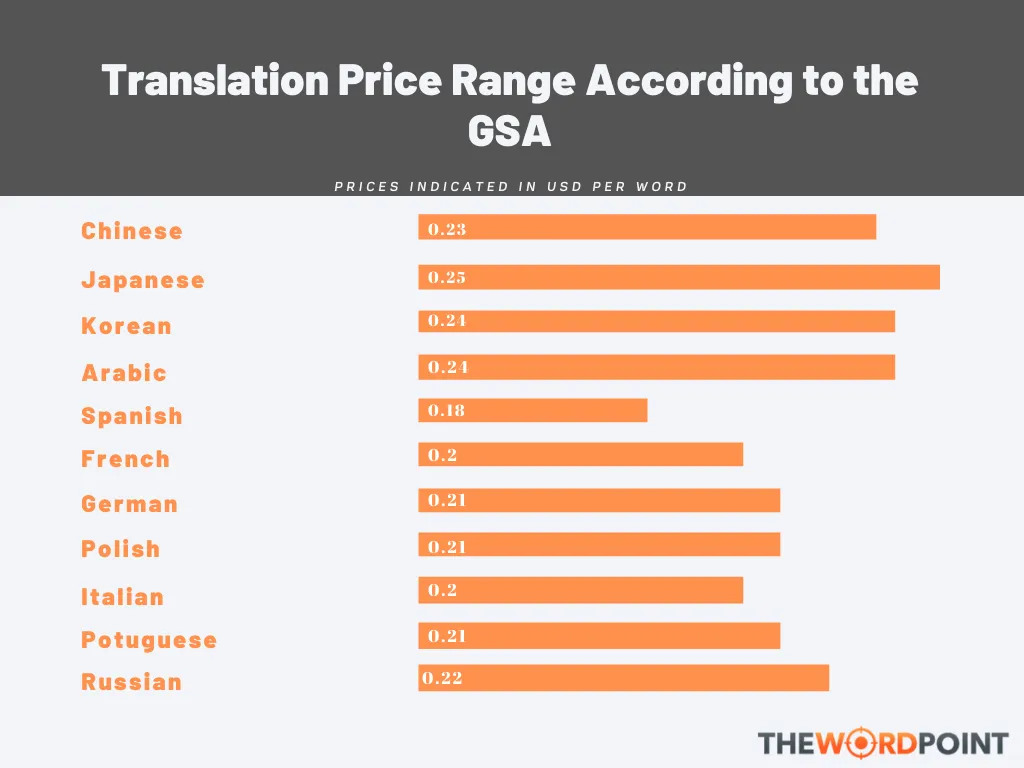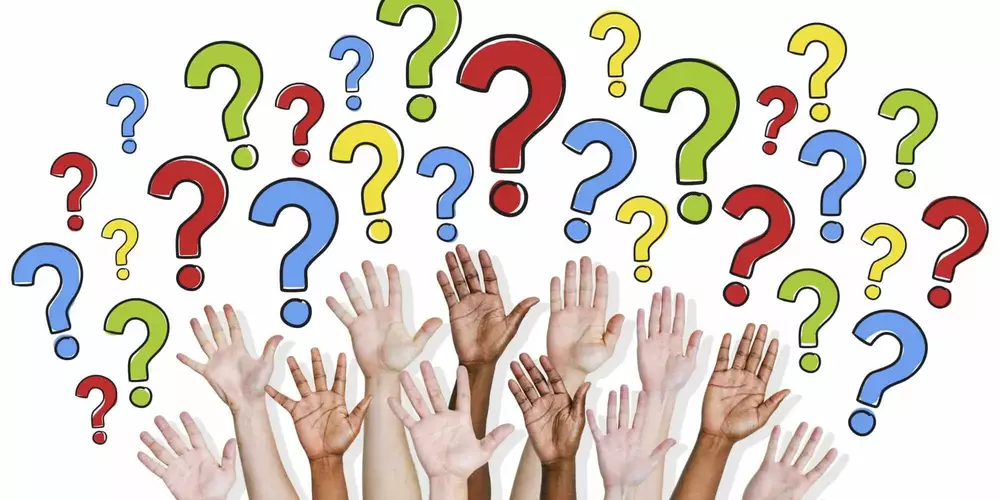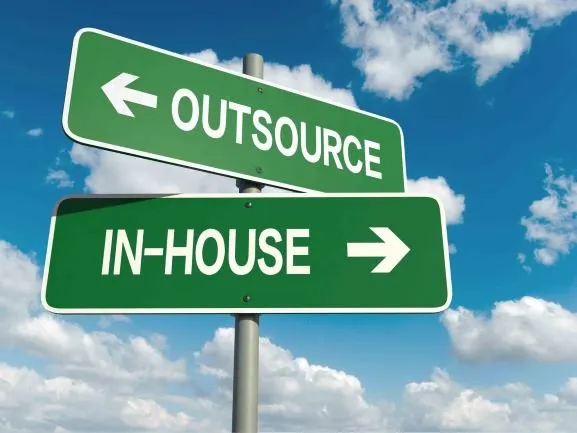
Earning Money as a Translator for TheWordPoint.com
Find out how you can earn money as a translator at TheWordPoint. Why TWP is the best choice and how to start working for us.

What is the average translation rate across the US? This question seems straightforward but a closer look reveals that there are multiple ways to answer it. The new technologies such as machine translation made the work of translators relatively easier and faster. It raised a question of whether the traditional rate per word can truly reflect the worth of the work. This is the reason why the new ways for pricing such as the hourly rate or subscription-based model have appeared. However, the word count still prevails in price formation in most of the language services keeping the average translation rate USD 0.22 per word.
The US government has an extensive database that contains the prices for numerous goods and services including translation. The system is aimed at ensuring transparency so anyone can access it and review the available offers. It was designed by the General Services Administration (GSA), which is the centralized agency of the US government that helps to support the federal agencies with real estate, products, and services supply. All of its providers are required to pass certification to the high quality delivered. After that, a company can access the database and take part in the bidding process by submitting a proposal that includes the price list for the services.
Translation in GSA’s procurement is under the category of language services, which in turn falls under the section of professional services. Currently, there are 20 contractors in translation services. Back in 2018, there were over 90 companies on the list including Lionbridge and LanguageLine and smaller companies. Now the situation has changed. Most of the companies are small businesses and only a few are international corporations. By comparing the current data with the previous years it is possible to see a bigger picture and more accurate information on the price range in the field.

The data was retrieved from the GSA’s eLibrary in 11 most popular languages: simplified Chinese, Japanese, Polish translation, Korean, Arabic, Spanish, French translation, German, Italian document translation, Portuguese, and Russian.
The price range among the minimum price offers was from USD 0.08 to 0.14 per word. The lowest prices for translation were found in Chinese (USD 0.08), followed by Spanish and French (USD 0.09). The maximum price was as high as USD 0.61 for translation in Arabic, Japanese and Korean as target languages. The midpoint among the highest rate was Portuguese translation services at the price of USD 0.49 per word.
The situation with the average price, is, however, different. While of all, the lowest-paid was simplified Chinese translator services, the midpoint rate for Spanish is USD 0.18 per word making it the cheapest of the most popular languages translated. The data suggests that on average, the highest price per word is found in translation service for Japanese (USD 0.25). The three next highest rates are Arabic (USD 0.24), Korean (USD 0.24) and Chinese (USD 0.23).
For all the other languages, the average cost for translation is between USD 0.2 to 0.22 per word. If we exclude Spanish, the price variation is not much significant across all of the most popular languages. For a translator, it means that the target language they work with does not influence their earnings. The more likely determining factor is the abundance of work and the competitiveness within the industry.
Useful information: If you need a proper Vietnamese translation for your company, then use our service.
The results of our survey suggest that the average rate for translation is USD 0.22 per word with little variation across different target languages. The comparison to the previous years’ data shows no significant differences in price. Apart from this, the analysis of the proposals (schedules) of GSA’s current contractors also revealed some other interesting trends in the translation industry.
Almost every fifth company now charges certified translation services at a per-hour rate. The price range is rather wide starting from about USD 40.00 to USD 100.00 across the contractors. However, none of them specifies the amount of work included in 1 hour so it is not clear what to expect from them.
21.05% of the companies offer different schedules for translating foreign language to English and for English to a foreign language. Most of the services set higher prices for translation from a foreign language. One of the companies has the same rate for all languages but Spanish.
More than 25% of the companies specify different language groups and charge differently in accordance with these groups. The classification, however, does not depend on any linguistic factor but rather on some market parameters. The price between the groups often differs drastically: one word in Burmese may cost the same as two words in Hungarian.
Some more interesting facts revealed:
Read also: Do translators make good money?
Pricing per word has some advantages such as absolute transparency of the cost formation. Here also comes a drawback since a flat rate may not reflect the amount of time and effort spent on translation. Some texts are easy to work with while others are challenging and time-consuming. This is why in recent years more and more start charging at an hourly rate. From a translator’s side, there is less risk for loss – you are paid for the actual time spent on work. So it might be high time to start thinking about how much your hourly costs. The new-age machine translation (MT) has changed the way translators now work. Of course, various parameters are important in working with MT. Segment word count, which differs in various texts determines whether MT will be able to translate fluently and so will save more time of the translator. Another decisive factor here is edit distance – if it is low, the MT translation is good and requires only some minor changes, but in another text, it can be high and will require thorough editing.
The main idea here is, however, that in most cases if a translator utilizes MT, word count may not be a precise metric to estimate the work because a good share of words was translated by a machine in seconds. If the technology is good enough, it will significantly reduce the time spent on each text. A translator then will benefit from charging hourly or for the entire project. Thus, powered by technology, now it is the time for every translator to reconsider the pricing model.
For the last several years the prices for translation have not witnessed any significant changes. As before, the average rate is USD 0.21 per word. However, more companies start charging hourly and many professionals predict the close end for the per-word rate. The recent major advances in AI and language processing technologies start reshaping the market of translation and localization service and the working process for translators. MT now helps translators save their priceless time and charge hourly.

Find out how you can earn money as a translator at TheWordPoint. Why TWP is the best choice and how to start working for us.

At first glance, and correctly so, the difference between a translator and interpreter is the medium through which they actually translate.

Expanding overseas is exciting. It also means that there is much work to be done and many decisions to be made. One of those decisions will be in the area of translation. Do you hire an in-house, local team or outsource to a language service provider?
Your personal account was created successfully. Login details were sent to your email.
Thank you for choosing our service!
You have registered your account successfully!
Your application was sent to our
HR Departament.
Get prepared to pass several proficiency tests to prove your skills as we hire only the best experts to deliver the best quality to our Clients. We will contact you soon for futher instructions